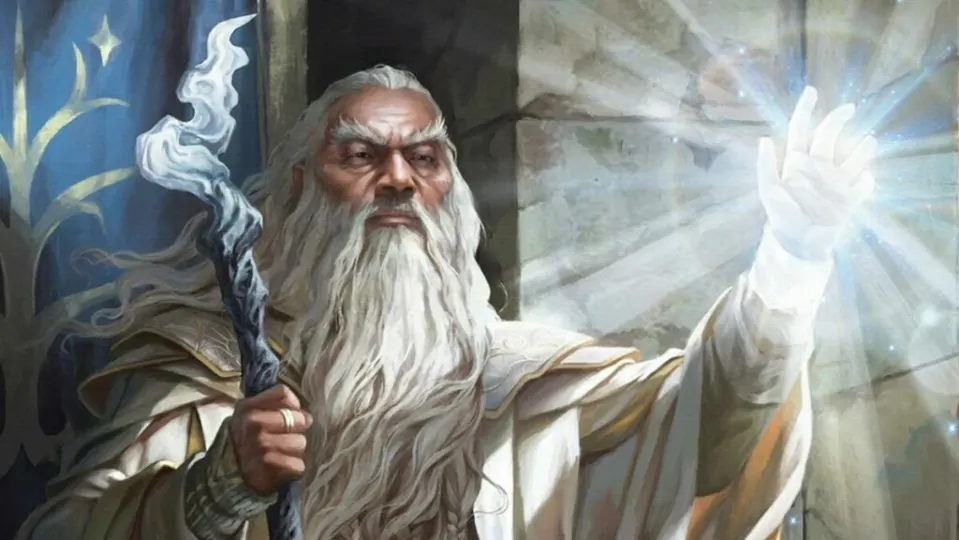Wizards of the Coast officially launched its new Magic: The Gathering collection, The Lord of the Rings: Tales from Middle-earth, on June 23rd. By closely following J. R. R. Tolkien’s texts, reinterpreting them in certain points -especially in terms of aesthetics-, they have created a collection that, in terms of respect for the original work, is absolutely exceptional. A collection of cards that will fascinate all fans of J. R. R. R. Tolkien. Even if getting all nine versions of the Nâzgul is not going to be easy.
Now, that doesn’t take away from the fact that this is a Magic: The Gathering set. And although the discourse of a certain part of the players is that the set does not have especially powerful cards, in reality The Lord of the Rings: Tales of Middle-earth has much more than what the eye can see at first glance. That is why we have decided to highlight those cards with more potential to become key pieces of competitive decks in the formats where this set is legal. That is, in Modern, Legacy, Vintage, Commander and Pauper. Although not all of them are here, they are all here, or at least we hope so: this is our particular choice of what we consider to be the best cards of the collection. A collection that, besides being beautiful and nostalgic, has some cards that can strongly shake the meta of the game.

The One Ring
As a matter of lore, it was logical that the single ring would be a powerful card. In fact, you don’t need to think much about it to see why it is so. Just with Indestructible and giving us protection against everything until our next turn for 4 mana, it would already be a piece to consider, but being able to turn it, add a counter on it and draw as many cards as counters in exchange for suffering as much damage as counters at the beginning of our turn, it is a bargain. Why? Because in two turns, for three life, we can draw six cards. If we draw a second One Ring, as it is a legendary artifact, we can sacrifice the original one and keep the new one, without counters and without losing lives. What does that mean? That with three The One Ring in the deck, one on the bench and a Karn, the great creator; or with four in the deck and an Emry, stalker of the lake, we have a combo that makes the One Ring the best card in the collection.
Orcish Bowmasters
But is The One Ring the best card in the set? Actually that position is hotly contested by the most unexpected card of them all: two Orcish Bowmasters. Orcish Bowmasters can enter the battlefield any time you could cast an instant and does 1 damage to any target. No conditions attached. In addition, every time an opponent draws a card after the first one each turn, it does 1 damage to any target and amasses an orc; that is, it creates a 0/0 Orc counter with a +1/+1 counter, or gives a +1/+1 counter to a 0/0 Orc counter. How much is drawn in Commander, Legacy, Vintage and Modern, the formats where this collection is legal? Even without unique rings, a lot. And that makes Orcish Bowmasters one of the most powerful cards in the set.
Reprieve
Sometimes a card just needs to do something that its color can’t normally do. That’s what Reprieve does. Our opponent is going to cast a spell and for two mana, one of them white, we return that card to his hand and draw a card. Are we just buying time? Indeed. do we sometimes just need that, especially when white specializes in very aggressive tribal strategies and value-based control strategies, where it’s all about buying time? Also.

Flame of Anor
Modal spells, which allow us to choose between several options, are always interesting. If they are instantaneous, they always find some place. Flame of Anor requires a blue and red mana plus a colorless, but it has three very good modes separately, and lets us choose a second one if we control a Mage. Does this card have a place? If there’s room in Modern and Legacy to put Snapcaster Mage back into Izzet decks, those that have blue and red mana available, then rest assured that Flame of Anor is a card you’re going to see a lot of.
Stern Scolding
An uncommon counter for a mana counter is always interesting. If it is able to kill any creature with life 2 or less, it has a good chance of becoming a spell to be reckoned with. It kills the bulk of small and medium creatures in the format, particularly Modern’s most insidious creature, Ragavan, Skilled Rustler, but in return, it’s completely useless against any deck that plays no creatures or only plays big creatures. But that doesn’t mean that Stern Scolding doesn’t have potential in formats where, behind the bench, it can make us beat more selfish decks for value.
Delighted Halfling
Nobody likes a creature that gives mana. While it is true that Delighted Halfling only gives colorless mana unconditionally, it is also true that it gives colored mana to cast legendary spells and makes them impossible to counter. This makes Delighted Halfling an absolutely insane card. Where classic cards like Llanowar Elves are better in terms of being more reliable for single-color decks, Delighted Halfling works better at giving a reliable source of mana that also confers protection against any kind of opponent’s attempt to disrupt our plans, provided we play a decent amount of legendary creatures; something likely in any three or four-color deck.

Forge Anew
If there is one card that is secretly broken, in the sense that it will win a lot of surprise games in a way that no one expected, it is Forge Anew. Reading over it, it doesn’t seem to do anything particularly spectacular. It’s true, for starters, that it does a lot of things for a ridiculous cost. It returns a piece of equipment from the graveyard, allows us to activate equipment abilities at any time, and also allows us to equip for 0 the first time we activate an ability each turn. Hammer Time loves this because, wow, it’s based on doing exactly that, but Forge Anew does some very sinister things with it. Change who’s carrying Colossuss Hammer or Shadowspear once you’ve chosen blockers? Attack with Kaldra and, once you’ve resolved the first attack, equip it to another creature? It is also possible. That’s why it’s hard to imagine a world where Forge Anew doesn’t find a place at least in Modern.
Cast into the Fire
In a world where the single ring exists, there has to be a response to match. Under normal circumstances. Cast into the Fire would be a bad Erosionar. What happens is that The One Ring is indestructible and while Erosionar doesn’t affect it, Cast into the Fire exiles and by extension, can kill the One Ring. If we also add that it is legal in formats where an Emry, Lake Stalker and Hammer Time roam freely, then there is no doubt: Cast into the Fire is a card that every good player needs in his collection.
Spiteful Banditry
There are cards that are easy to despise a priori. Spiteful Banditry is one of those cards. At first, it seems clunky, slow, not too useful. It is a card that does not really fit in aggro and when red wants to go midrange or control, it depends on the other colors. But don’t be fooled: Spiteful Banditry is too similar to Ganchocarne Massacre, a card that had to be banned in Standard, to not take it into account. If we also add that it stays on the battlefield and generates a treasure for each enemy killed, giving us tremendous value for each new copy we cast, Spiteful Banditry has potential if you find a deck that wants to clear tables and generate value systematically.
Some of the links added in the article are part of affiliate campaigns and may represent benefits for Softonic.


